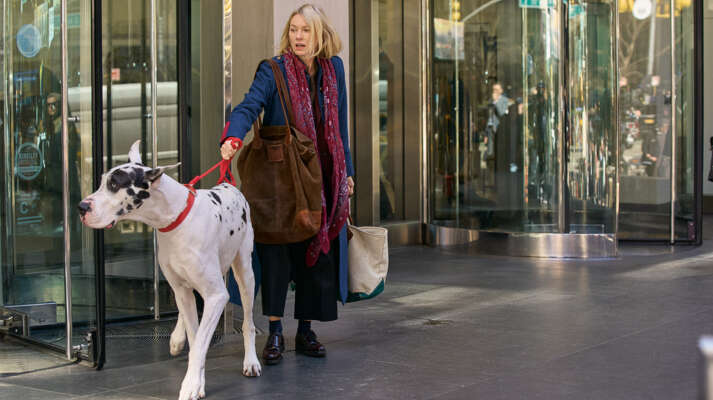An Alexander McQueen Timeline
From Savile Row to superstardom
An Alexander McQueen Timeline
Written By Peter Bowen
When Lee Alexander McQueen died tragically in 2010, he was only forty years old. Despite his short life, his impact on fashion and culture was immeasurable. In making McQueen, filmmakers Ian Bonhôte and Peter Ettedgui explore the rise of one of the 21st century's most significant cultural figures by looking at the history and artistry of his work. "The most important question we wanted to answer was how this shy, working-class young man with no connections became 'Alexander McQueen,'" explains Ettedgui. To provide a map of his remarkable ascent and wide-ranging influence, we have put together a brief timeline of his life.
1969: Lee Alexander McQueen is born in London, the youngest of six children. His mother Joyce is a homemaker and his father Ronald is a taxi driver.
1985 : McQueen leaves school to apprentice as a tailor on Savile Row, first for Anderson & Sheppard, then for Gieves and Hawkes.
1990: McQueen moves to Milan, getting a job as a design assistant to Italian designer Romeo Gigli.
1992: McQueen earns a Master's Degree at Central Saint. Martins College of Art and Design. His graduation collection, "Jack the Ripper Stalks his Victims," shocked and enthralled its audience. Isabella Blow acquires the entire collection, becoming McQueen's biggest supporter, even convincing him to drop his first name "Lee" to become simply Alexander McQueen.
1993: McQueen shows his first collection in London titled "Taxi Driver," in which he first introduces his "bumster" look.
1994: McQueen introduces his distinctive logo with the "c" inside the "Q."
1995: McQueen's Autumn/Winter collection "Highland Rape" stuns the London fashion world with its models staggering down the runway in torn and tattered outfits. Beyond the outraged headlines, the show's remarkable craft and cutting-edge designs introduced many to an important new designer.
1996: McQueen receives the first of four British Fashion Awards for British Designer of the Year. He would receive the award again in 1997, 2001, and 2003. In 2003, he is also awarded the international designer of the year by the Council of Fashion Designers of America.
1996: McQueen is appointed to Head Designer at Givenchy, a position he would keep for four years. During that time, he would design up to ten collection a year between his and the Givenchy label.
1996: McQueen's Union Jack jacket designed for David Bowie appears on the cover of the musician's EART HL I NGalbum.
1998: McQueen invites Paralympic athlete and double amputee
Aimee Mullins to open his Spring/Summer Show 1999 wearing a pair of artfully carved wooden prosthetic legs. Her participation marks the first appearance of an amputee on an international fashion runway.
2000: Tom Ford signs a deal with McQueen for Gucci Group to acquire a 51% share of the Alexander McQueen label with McQueen named as creative director with full artistic license.
2003: McQueen introduces his iconic skull-print scarf as part of his Spring/Summer 2003 collection.
2003: McQueen is awarded a CBE (Commander of the Most Excellent Order of the British Empire) by the Queen for his contributions to the British fashion industry.
2007: On May 7, McQueen's longtime friend and supporter Isabella Blow commits suicide.
2008: McQueen collaborates with Target for McQ Alexander McQueen for Target, becoming the first collaboration between the store and an international designer.
2009: On October 6, McQueen stages "Plato's Atlantis," introducing his Spring/Summer 2010 collection in a haunting vision of mankind returning to the sea from whence it came. The event was the first major fashion show to be live-streamed. After Lady Gaga tweets out a link to the show, announcing it will premiere her new single "Bad Romance," the site crashes.
2010: On February 2, McQueen's beloved mother Joyce dies of kidney failure. In a 2004 interview with The Guardian, Alexander McQueen told his mother his greatest fear was "dying before you." On February 11, Alexander McQueen commits suicide at his home in London.
2011: On May 4, New York City's Metropolitan Museum of Art opens "Savage Beauty," a retrospective exhibition of Alexander McQueen's work curated by Andrew Bolton and Harold Koda. The show became an overnight sensation with crowds waiting up to four hours to see McQueen's legacy. With over 650,000 viewers, the show became the museum's most popular fashion show and one of its most popular (and profitable) shows of all time.
2015 : The Victoria & Albert Museum restages "Savage Beauty," quickly becoming that museum's most visited exhibition.


